Garrattfan's Modelrailroading Pages

NBDS 118-119
Trial Assembly and gallery of the unpainted loco
Trial assemblyLast phase of the construction is the trial assembly. The most important purpose of the trial assembly is iron out all remaining issues, both in the assmbly process as well as in the running of the loco. It is important to do this before the loco is painted, because once it is painted your options of altering the loco without damaging the paint are very limited |
|
 |
Assembly starts by connecting all the wheels in the rods. I extensively used the photos I took from the original model, after a year I simply do not remember how it all came apart. The leading running axle is mounted. |
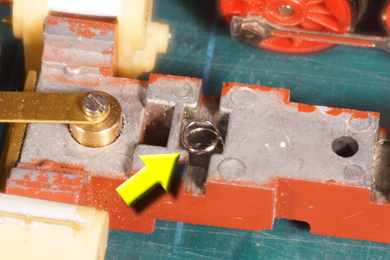 |
The first and the last axle are sprung. I put the two springs in place with a bit of epoxy glue. These springs are easy to forget in the assembly process. Guess how I know. |
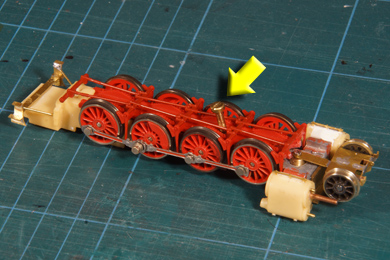 |
The brass screw is inserted, the frame is turned over and the bracket with the whole dangle of the valve gear is installed. Fiddly but not overly difficult. |
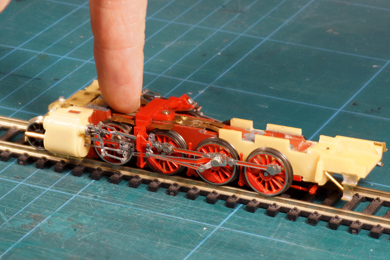 |
The frame is tested for free running. Easily said. It took me a week to get beyond this stage. I had to take the frame apart several times to correct little things. Little things yes, but with bad consequences for a free running chassis. It is absolutely vital that you sort these problems out now. |
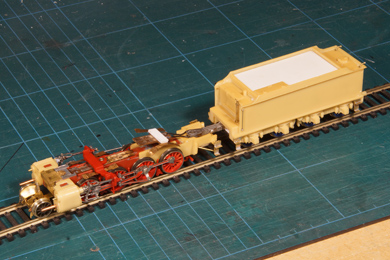 |
But finally the weight is inserted in the tender, the tender body is bolted on top, the drawbar is inserted and the small rear circuitboard is clicked into place |
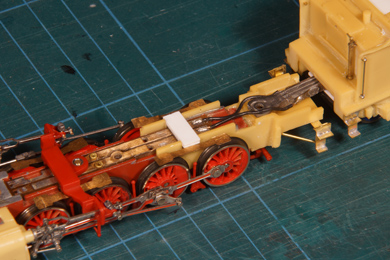 |
A strip if styrene sheet is glued on top of the rear circuitboard to keep the rear of the body correctly positioned. |
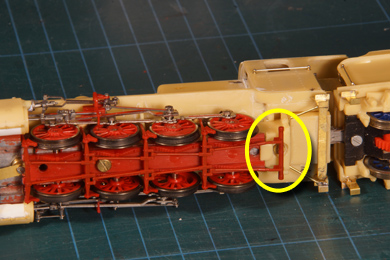 |
Speaking of which, the body is moved in place and secured with one bolt |
Now the locomotive can be put to the test. I am not overly impressed by the pulling power of the locomotive. The tender is substantially lighter then the original tender. It will struggle to haul a few cars on an incline. The flywheel in the tender works just fine. |
|
Gallery of the unpainted completed loco |
|
 |
|
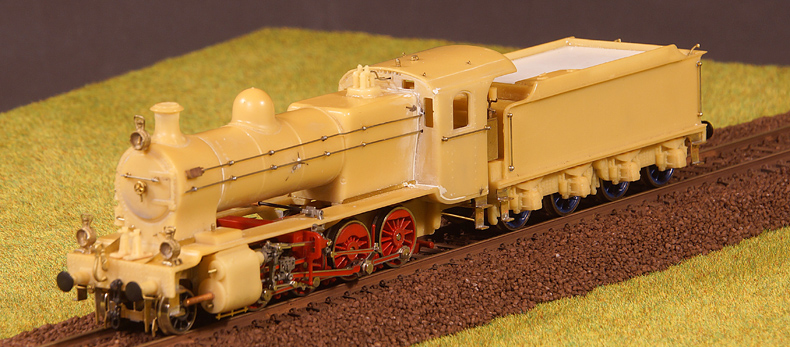 |
|
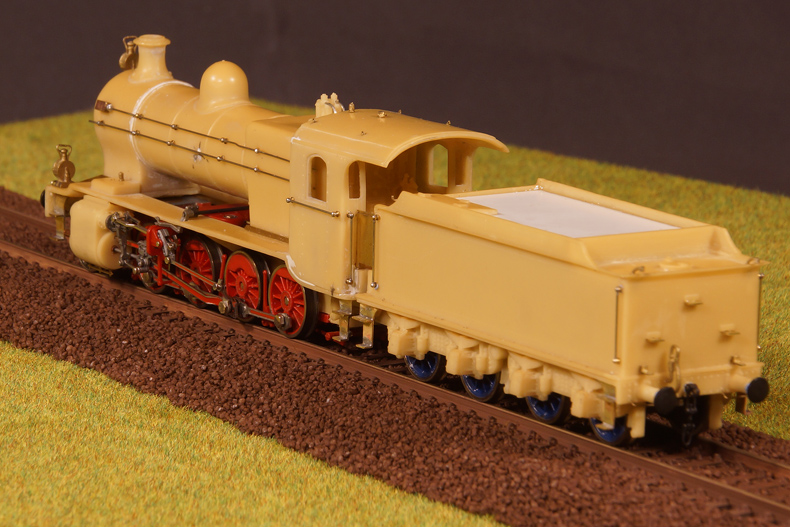 |
|
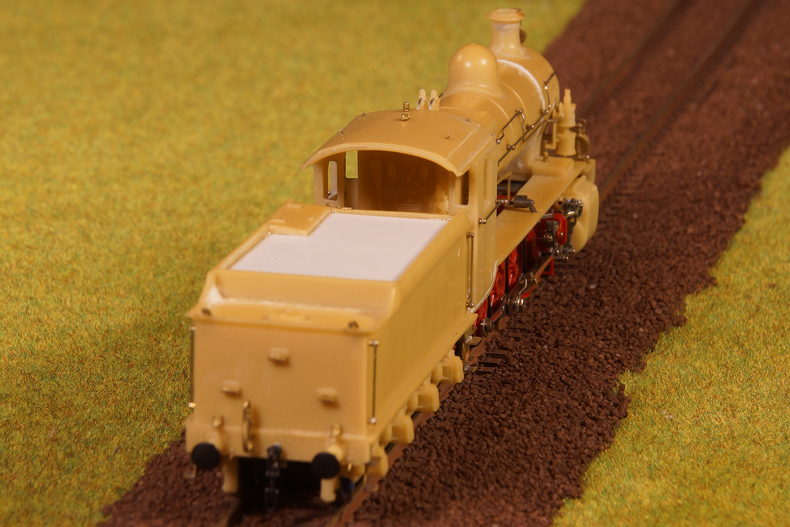 |
|
 |
|
 |
|
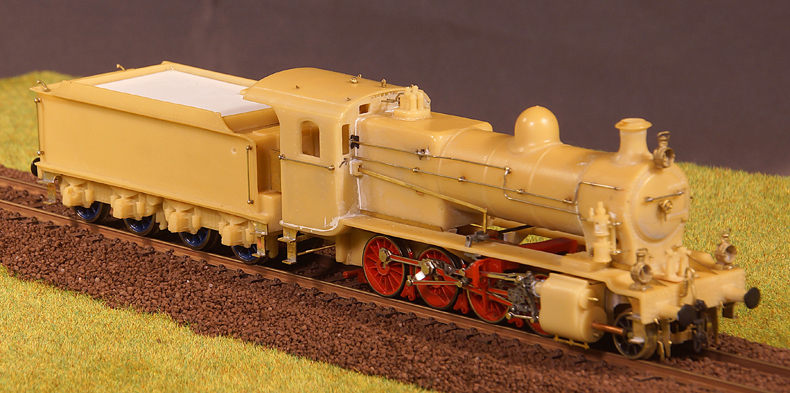 |
|
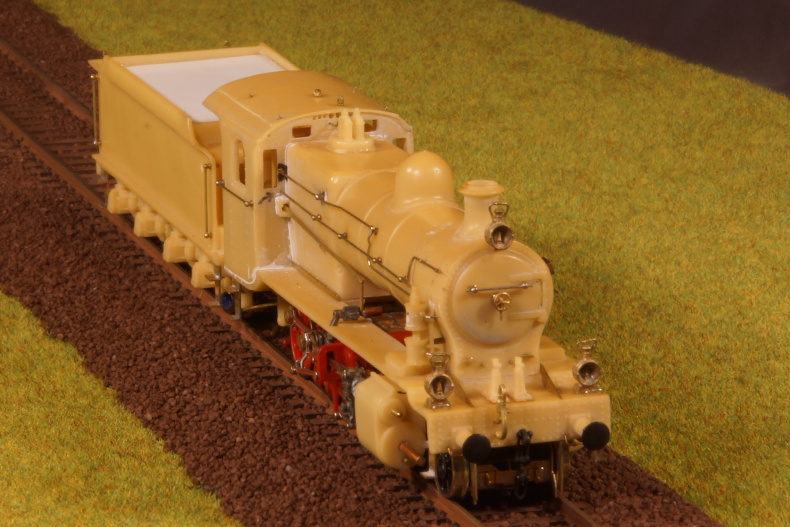 |
|
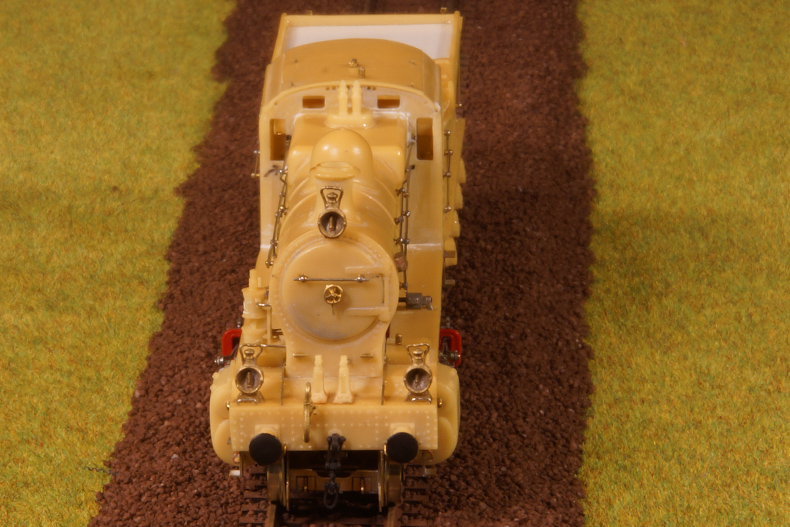 |
|
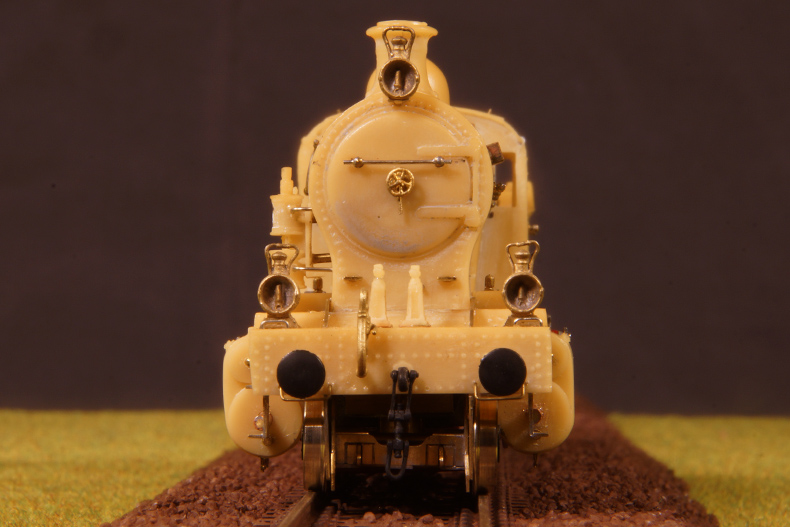 |
|
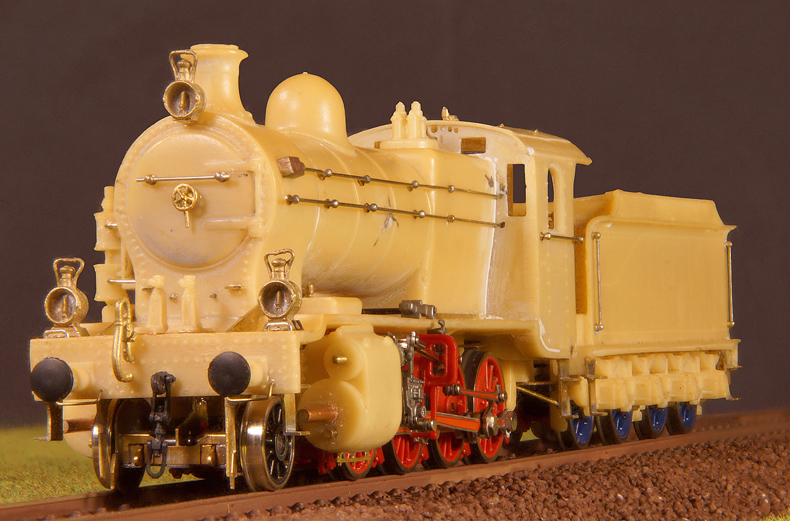 |
|
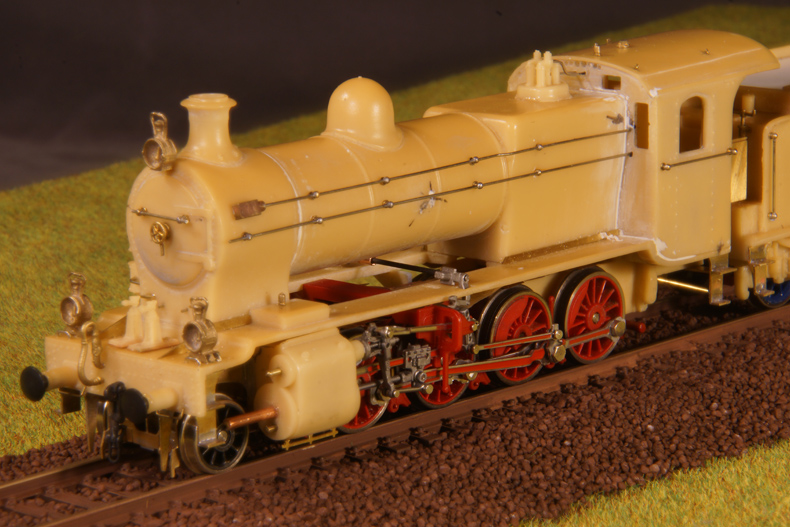 |
|
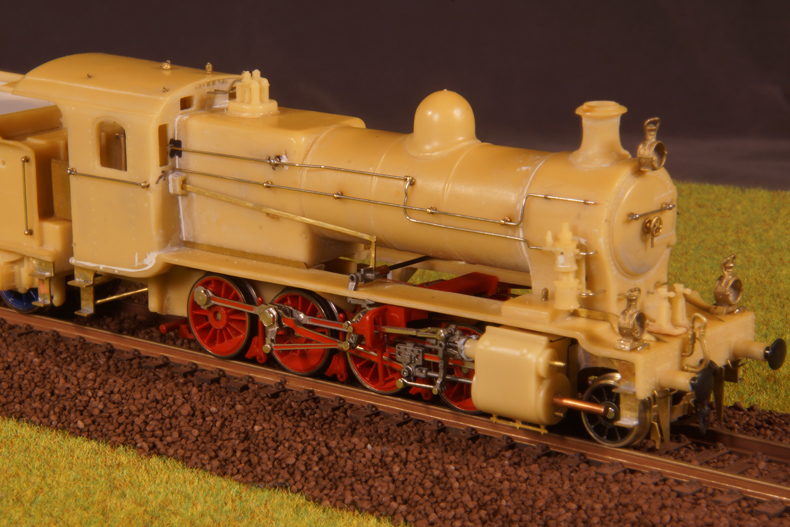 |
|
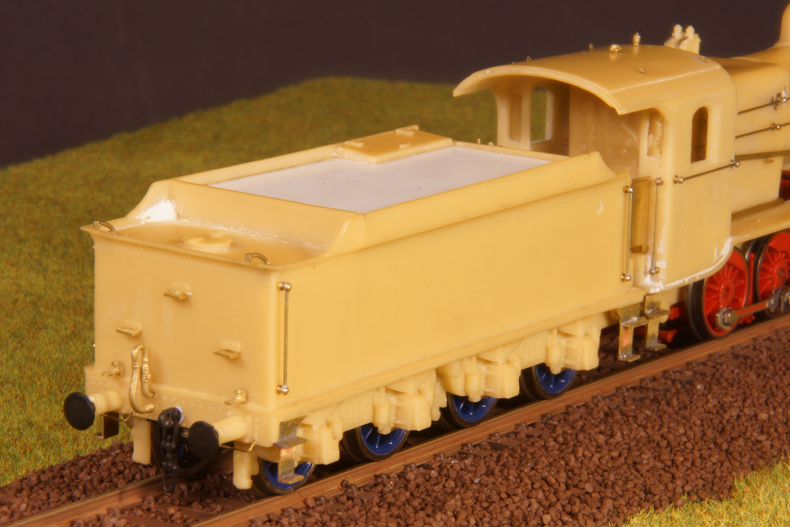 |
|
Comparison of old and newI could not resist putting an example of the original German 0-10-0 beside the resulting Dutch 2-8-0 |
|
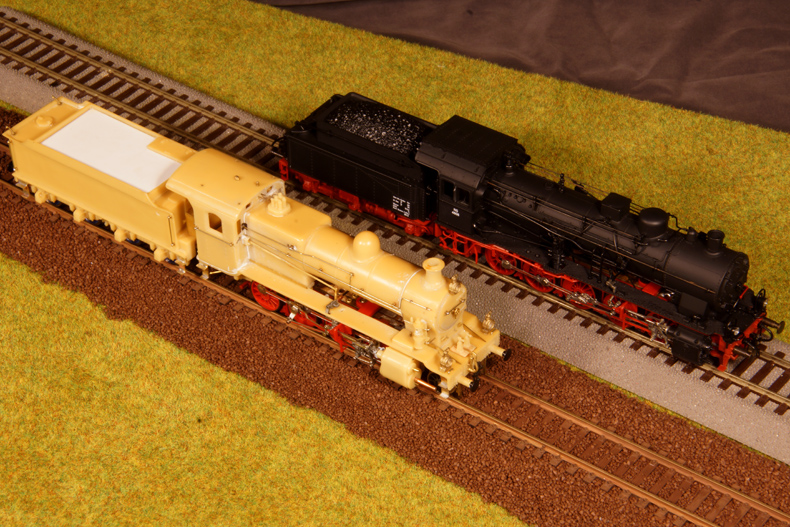 |
|
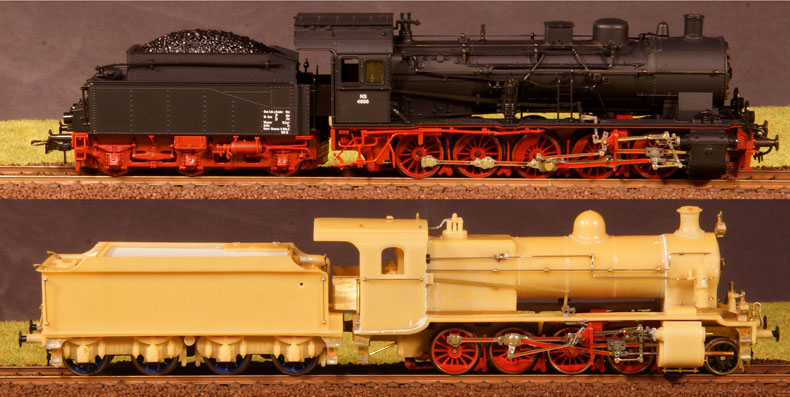 |
|


Sign my
GuestBook